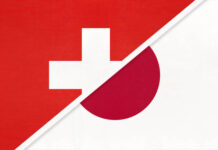Markets
ECB’s Schnabel triggered some unexpected market action yesterday. The German board member lived up to her hawkish reputation by noting that talk about rate cuts is premature. That’s more so because the recent decline in bond yields, exactly because of rate cut expectations, have loosened financial conditions more than thought. Combined with sentiment indicators bottoming out and (geopolitical) upside risks to inflation which is seen at target not before 2025, there’s a need to remain vigilant. Her comments were not at all groundbreaking but picked up by the market nonetheless in another sign the recent yield correction was overdone. German yields eventually rose 0.2-3.9 bps with the front underperforming as money markets pared ECB cutting bets. NY Fed Williams in an uninspiring late-session speech said rates are currently high enough but expects the Fed to maintain a restrictive stance for some time. US yields whipsawed but ended near the intraday highs with less than 2 bps gains at the long end. The $37bn 10-y auction carried a slight tail but demand was solid nevertheless. The 10-y yield closed above the 4% pivot. EUR/USD rose to 1.0973 from 1.0931. Euro strength was combined with USD weakness. The latter’s (changed) reaction function to oil was also visible for all to see yesterday. Brent dropped $2 intraday after a surprise buildup in US stockpiles, with knock on effects on the dollar. The yen fell to USD/JPY 145.76 amid fading expectations for a turn in BoJ monetary policy. The weak JPY is a boon to Japanese stocks though. The Nikkei 225 gapped higher to a new 34-y high this morning. The rest of Asian-Pacific markets is also trading with some proper gains. The US dollar as well as the euro lose out against most G10 peers.
We may finally get some fireworks on markets today with the US CPI number scheduled for release. Consensus expects the headline figure to pick up from 0.1% m/m to 0.2% m/m. This should bring the y/y from 3.1% in November to 3.2% in December. Core inflation is seen at a monthly 0.3% while keeping the disinflation process still in check y/y (from 4% to 3.8%). We draw comfort from the market reaction to Schnabel’s speech and stick to the view that anything but a big downward surprise should keep yields supported. We look out whether the 10-y yield gains further traction north of 4% to call off the immediate downside alert and turn the technical picture more neutral. Rising (US) yields should provide a bottom for the dollar, especially if equity optimism fades somewhat. The S&P 500 is nearing strong resistance around the 4800 barrier. EUR/USD first reference to the downside is located at 1.0875.
News & Views
The Bank of Korea kept its policy rate unchanged at 3.5%. It’s been at that level for a year now. The policy statement dropped the (hawkish) reference that additional rate hikes might be needed. The BoK will nevertheless maintain a restrictive policy stance for a sufficiently long period of time until the Board is confident that inflation will converge to the 2% target. The change of tone comes as inflation continues to slow (3.2% Y/Y in December) with external risks regarding oil prices and the Israel-Hamas conflict having eased. Prematurely lowering the base rate risks stimulating inflation expectations and a new rise in actual inflation. To complement the high policy rate, the BoK decided to temporarily increase the amount of financial support to regional SME’s. At its next meeting, the BoK will have a new set of economic projections which could trigger a further finetuning of policy guidance for 2024.
The US Securities and Exchange Commission for the first time approved exchange-traded funds that invest directly in Bitcoin in what can be a pivotal moment for cryptocurrency markets. First funds are expected to start trading as soon as today. Spot bitcoin ETF’s had been available in other markets, but US access opens up direct access for a large share of the investor community. The SEC approval marks a U-turn after rejecting earlier application for almost a decade because of manipulation and fraud risks.












